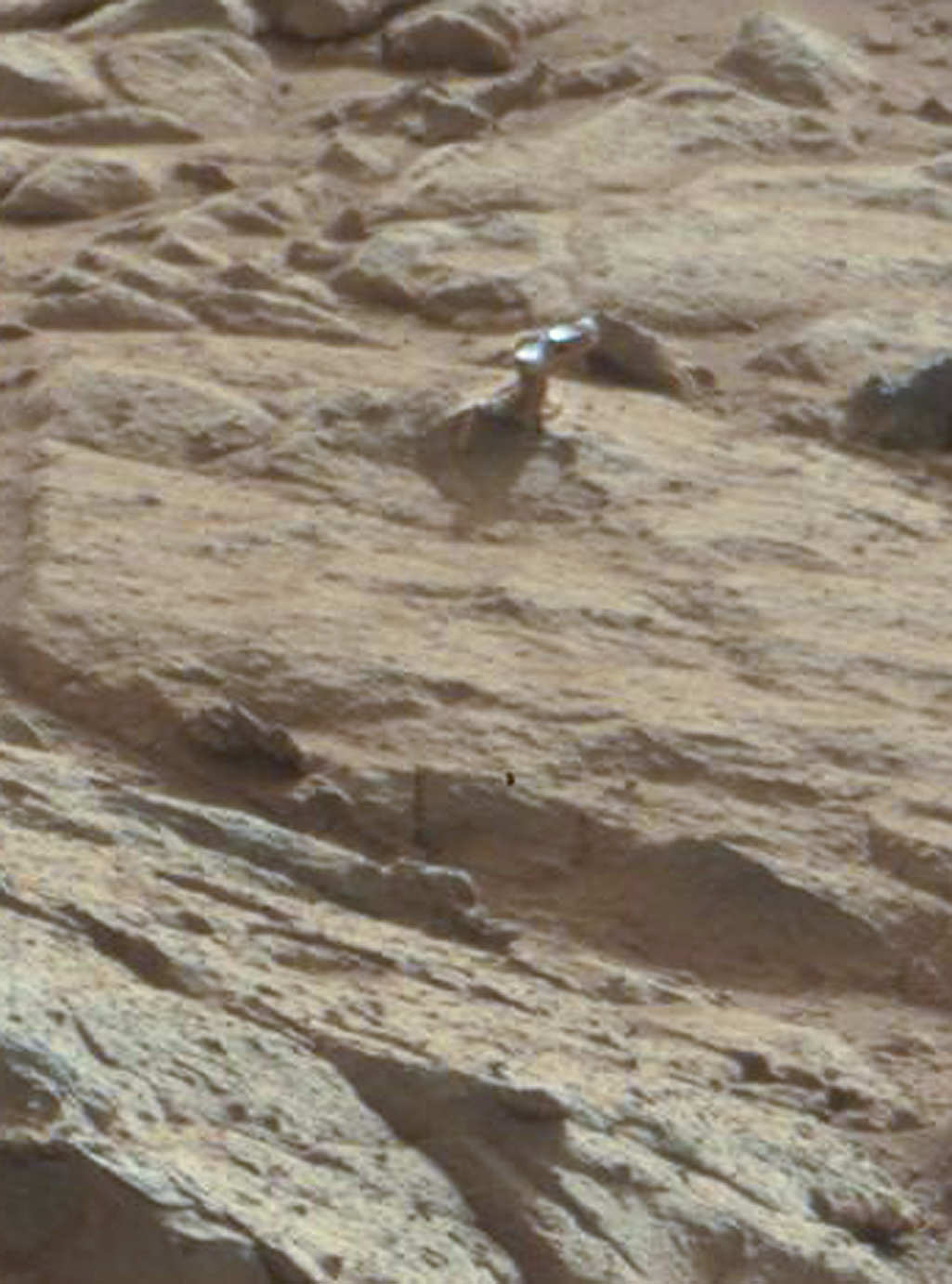As
we reported last week
, images from the Curiosity rover showed what looked like a piece of shiny metal sticking out from a rock. Some of our readers suggested that it might be a handle or knob of some kind. It's a knob, yes, says Ronald Sletten from the Mars Science Laboratory team, but a completely natural formation. Sletten, from the University of Washington, explained that, not surprisingly, it is actually a part of the rock that is different -- harder and more resistant to erosion -- than the rest of the rock it's embedded in.
On Earth, as on Mars, "often you can see knobs or projections on surfaces eroded by the wind, particularly when a harder, less erodible rock is on top," Sletten said, via an email to Universe Today from the Jet Propulsion Laboratory media relations office. "The rock on top of the projection is likely more resistant to wind erosion and protects the underlying rock from being eroded."
As far as why it appears shiny, Sletten said, "The shiny surface suggests that this rock has a fine grain and is relatively hard. Hard, fine grained rocks can be polished by the wind to form very smooth surfaces."
It also may be shiny because it is wind-blasted and therefore dust-free, Sletten said, "while the surfaces not directly being eroded by wind may have a fine layer of reddish dust or rock-weathering rind. The sandblasted surfaces may reveal the inherent rock color and texture."
He added that the object is an interesting study in how wind and the natural elements cause erosion and other effects on various types of rocks.
[caption id="attachment_99764" align="aligncenter" width="430"]
A closeup of the shiny protuberance. Credit: NASA/JPL/Malin Space Science Systems. [/caption]
In looking at a zoomed-in close-up of the "knob" or protuberance from the rock, Sletten said, "This knob has a different type of rock on the end of the projection. This rock may vary in composition or the rock grain size may be smaller."
[caption id="attachment_99891" align="aligncenter" width="580"]
A shiny-looking Martian rock is visible in this image taken by NASA's Mars rover Curiosity's Mast Camera (Mastcam) during the mission's 173rd Martian day, or sol (Jan. 30, 2013). Image Credit: NASA/JPL-Caltech/Malin Space Science Systems.[/caption]
Because of the winds on Mars, there is quite a bit of erosion of rock, visible in the image above, as well as in many images from all the Mars rovers and landers. These type of surfaces are called "ventifacted" -- wind-eroded surfaces caused by many fine particles of dust or sand impacting the surface over time. Areas of rocks may appear sculpted, as softer parts erode more easily or they may reflect small scale wind patterns, Sletten said.
In some ways, he added, it's a lot like what happens to rocks in Antarctica. See the annotated images he provided below:
[caption id="attachment_99892" align="aligncenter" width="580"]
Annotated image supplied by Ronald Sletten, MSL science team. [/caption]
[caption id="attachment_99893" align="aligncenter" width="580"]
Annotated image supplied by Ronald Sletten, MSL science team. [/caption]
So, this weird shiny thing on Mars is nothing
too
out of the ordinary -- not a door handle, hood ornament or not even Richard Hoagland's bicycle, as was suggested by readers on
our previous article.
But for one more look, here's the 3-D version(make sure you use the red-green 3-D glasses):
[caption id="attachment_99794" align="aligncenter" width="580"]
3-D anaglyph from the right and left Mastcam from Curiosity showing the metal-looking protuberance. Credit: NASA/JPL/Caltech/Malin Space Science Systems. Anaglyph by by 2di7 & titanio44 on Flickr.[/caption]
The original raw image from the Curiosity rover
can be seen here
, and our thanks to
Elisabetta Bonora
, an image editing enthusiast from Italy, who originally pointed this image out to us.
 Universe Today
Universe Today
